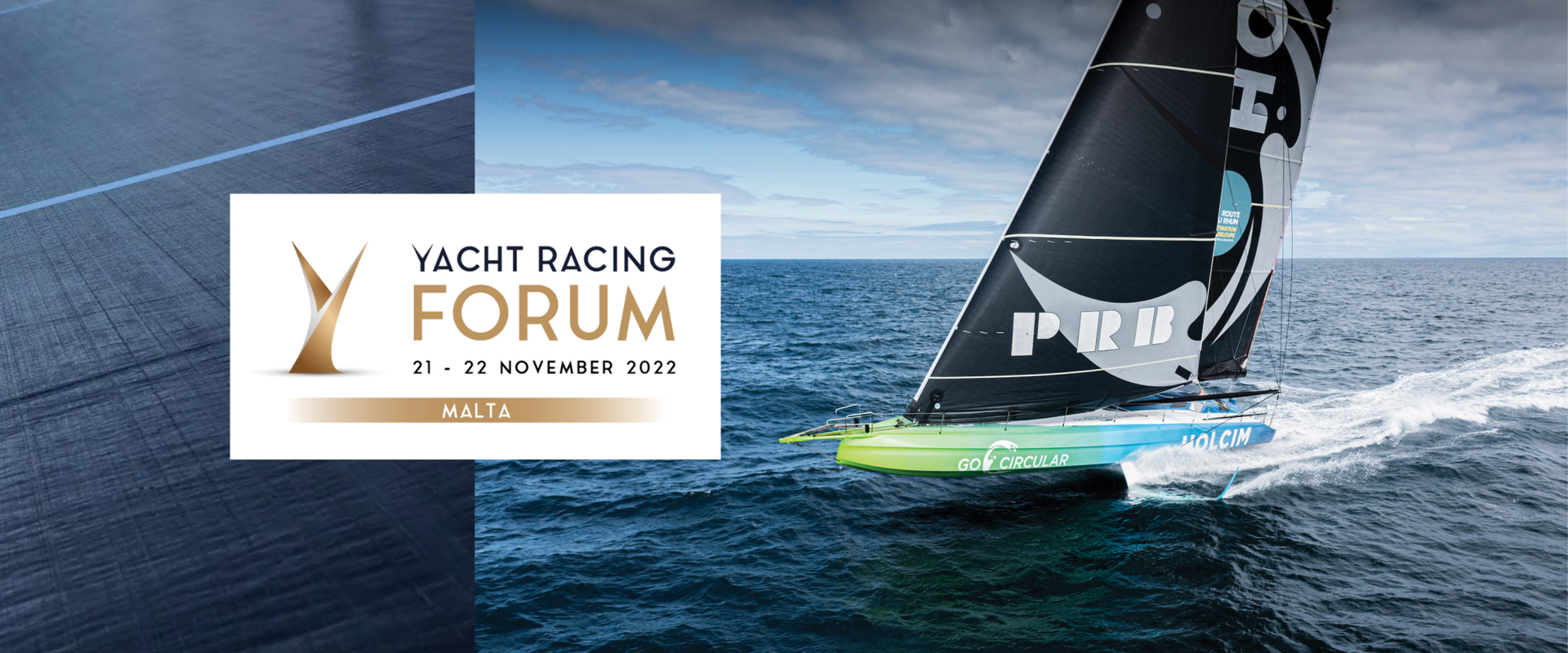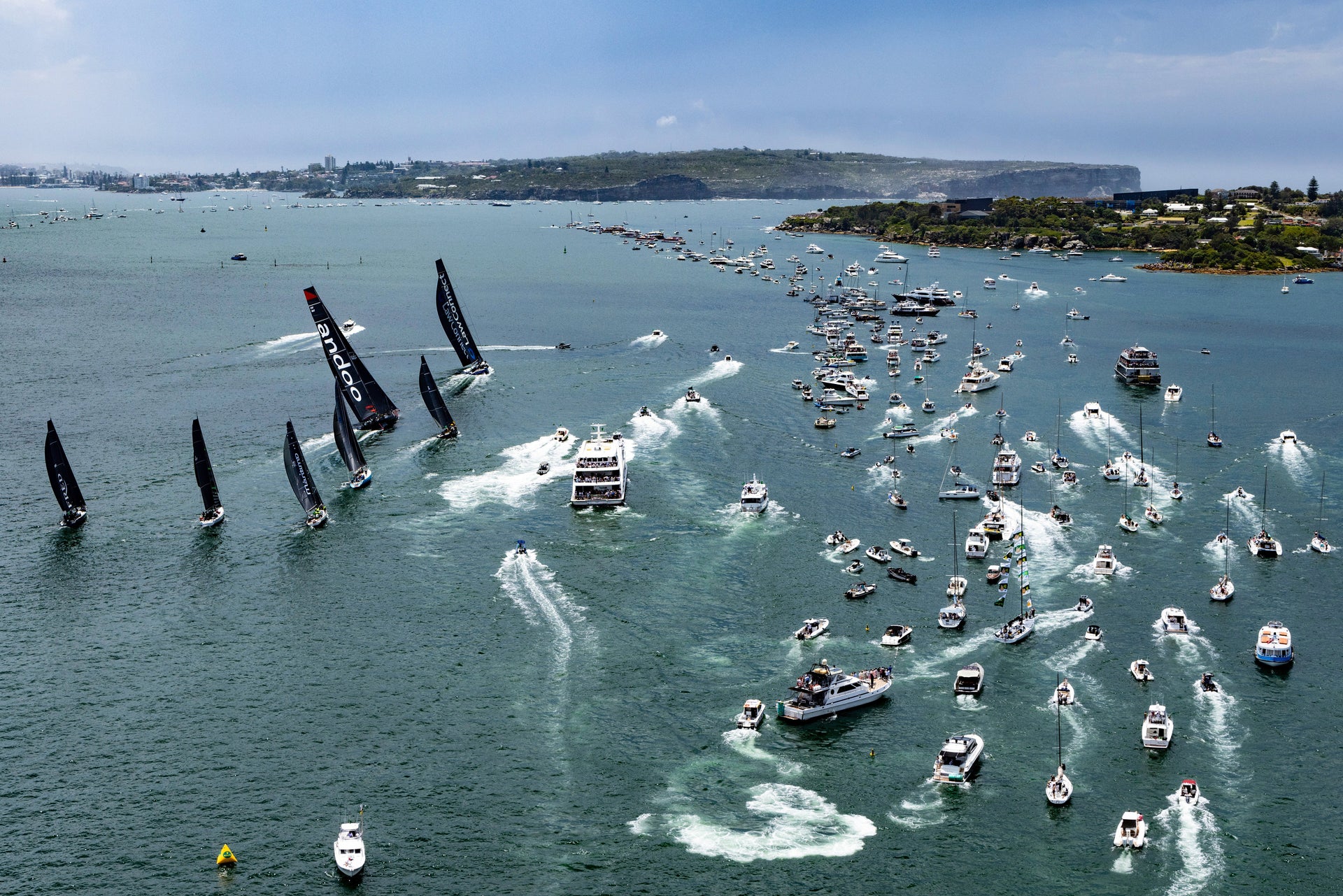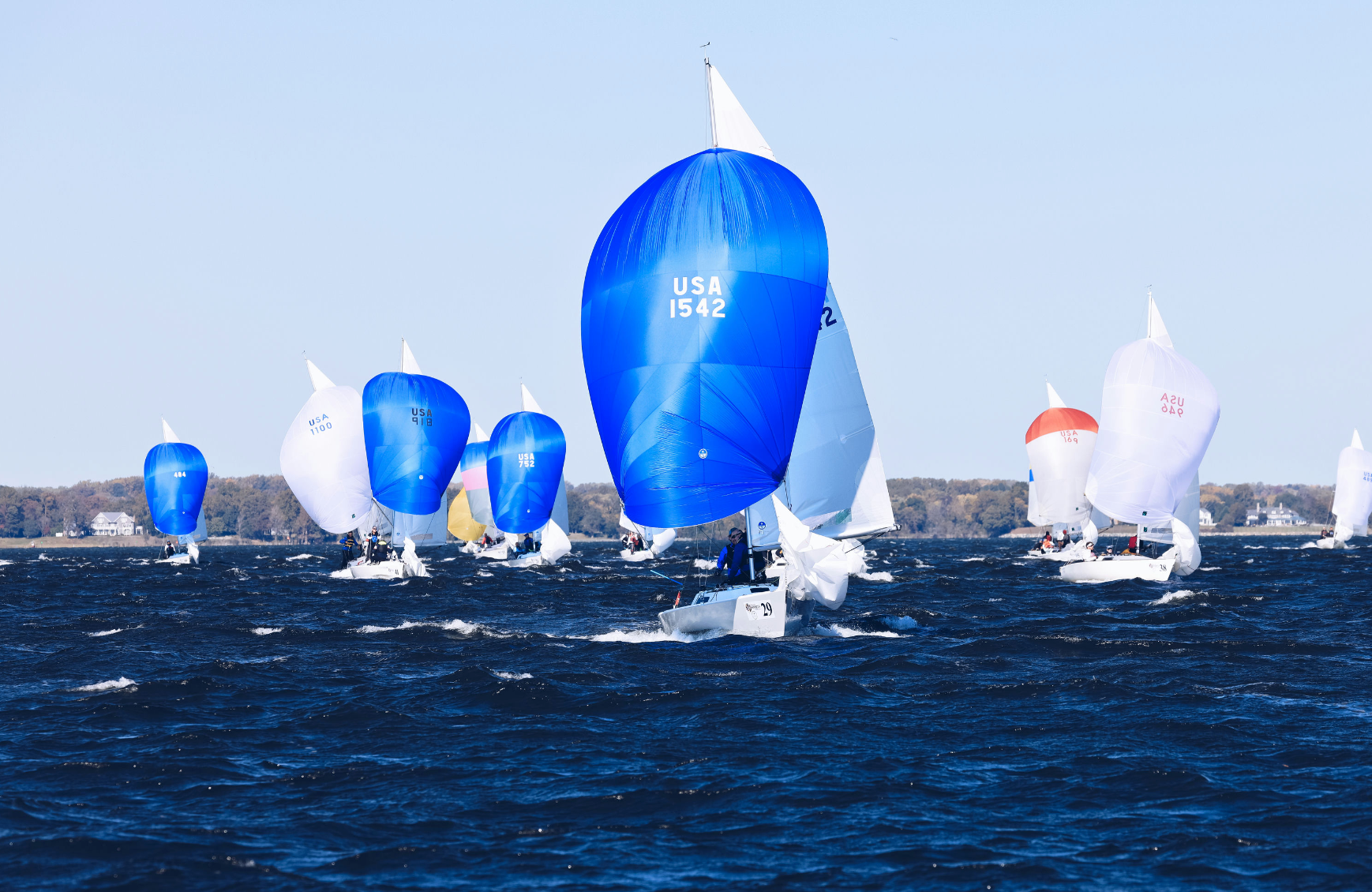TECHNOLOGY, TRENDS AND TALENT
TECHNOLOGY, TRENDS AND TALENT
Debriefing the North Sails Presence at the 2022 Yacht Racing Forum

When North Sails UK General Manager Ian Walker and Head of Design Services Jeremy Elliott traveled to Malta in November to attend the 2022 Yacht Racing Forum, the British duo had a number of objectives in mind.
Now in its thirteenth edition, the annual Yacht Racing Forum – incorporating the Design and Technology Forum – features two days of high-level presentations and extensive networking opportunities and has become a must-attend fixture for the yacht racing industry’s business leaders.
The Malta event attracted 250 delegates from 23 countries, and according to Walker, a two-time Olympic silver medallist and winner of the Volvo Ocean Race 2014-15, who joined the North Sails management team in August this year, it provided the perfect opportunity to highlight what it is that sets the global sailmaking company apart from its competition.
“We wanted to showcase the best of our technology to industry leaders by demonstrating what we have been working so hard on,” Walker said.
Likewise, Elliott – whose Design Services division is responsible for making North Sails expertise and technology available to the North Sails Technology Group companies and their clients – welcomed the chance to give a presentation titled Technology, Trends, and Talent to approximately 90 delegates at the Design and Technology Forum.
Among the trends Elliott highlighted was the increasing importance of the internal structure of sails, which he said is, in many ways, as important as the sail’s shape.
“Increasingly, modern sails are required to do much more than simply hold their shape as long as possible as the wind strength increases,” he said.
“For a long time, we had sail structures that inevitably grew when they loaded up – as the wind built the sails basically got deeper. It was quite an achievement some time ago when we evolved the 3DL string sails to a point where they held their shape over the wind range.”
“Now, with 3Di applied through concepts such as the HELIX Structured Luff we have a structure that can naturally flatten as the load goes up – even after you’ve used up all your trimming options such as mastbend, headstay tension, and so on.”
North’s ability to produce such remarkable sails is based on its patented 3Di composite sail technology, which, Elliott said, has expanded into areas that were originally felt to be less suited to such a structure.

“Everything from dinghies and small light boats with really flexible rigs to spinnaker staysails for big boats – we now see 3Di has been hugely successful in all these areas,” he said.
Building sails that are flexible enough to enable the shape to stretch out rather than to stretch in is a critical element of achieving a wide shape range – a requirement that plays nicely into North’s Helix Structured Luff load sharing technology.
“The sails we are designing today need to look after themselves,” Elliott explained.
“The more adaptable the structure is, the wider the range of flying shapes you can have. We are now finally in a situation where as the breeze goes up and the load in the sail increases, the sails naturally become flatter– which is precisely what we need.
“For a long time the goal was just to resist the growth and hold the original shape but now we can have whatever shape we want in whatever wind strength.”
Although originally developed for larger yachts, expanding its application into smaller craft like windsurfers and high performance dinghies such as the International Moth and 49er skiff, this new highly responsive construction technique owes more than a little to North’s 3Di Ocean cruising product which incorporated polyester yarns that are better suited to smaller more lightly loaded sails.
“That opened the door to the smaller boats,” Elliott said. “But learning lessons like that allows you to look afresh at other areas you had ignored.
“A good example is spinnaker staysails on bigger boats where previously an ultra-light laminate paneled sail was the only construction that worked. Now, though, we can apply what we learned with our smaller boat solutions and we get a lay up that works really well for big spinnaker staysails in 3Di.”
Also benefiting from these advancements are the fast foiling big monohull yachts of the America’s Cup.
“In those boats you can have an apparent wind of eight knots before take off, but when you get foiling, the apparent wind can rocket up to over 40 knots.
“That sort of breadth of apparent wind range for a single sail has never been seen before. In the past, the apparent wind range for any sail was about 10 knots – maybe 10 knots to 20 knots or 20 to 30, but never eight to 40+ knots.”

“You can’t be changing jibs in the middle of that transition, so you have to have an ultra-adaptable sail. That changes the game quite dramatically because you need such a huge range of flying shapes now, and that is achieved through the structure of the sail much more than it ever did from the molded shape. That’s the challenge our America’s Cup designers are constantly facing so 3Di and HELIX are essential assets in their armory.”
Indeed, Elliott believes that developments in sail structure have become a key battleground in the latest cycle of the America’s Cup.
“I see the structure in the sails nowadays in the same way that the shape of the keel bulb was regarded 20 years ago – because it is such a significant part of the boat’s performance,” he said.
“It is no surprise that you see so little of what is actually going on inside the sails. The filaments can now all be black so you cannot tell whether the sail is, say, 60 or 80 percent carbon, or 40 percent polyester and elastic – or somewhere in the middle.
“In the old days of the America’s Cup, anyone could look at a sail on a Version 2 IACC boat and tell what the structure was – what materials had been used and what the primary structural groups were.
“That meant it was relatively easy to reverse engineer someone’s sail, but it’s almost impossible now and it is one of the biggest elements of the sail plan and the performance potential of the boat.”
Despite the remarkable advancements North has made with its proprietary 3Di technology since its inception 10 years ago Elliott believes the company has still only scratched the surface in terms of its future potential.
“We have come a very long way in ten years. The product is unrecognizable and is significantly better across pretty much every metric you could choose – and we have expanded into a whole bunch of areas we thought would be off limits. I am certain that in another 10 years the product will probably be unrecognizable from where we are now.”

As compelling as North’s technology narrative might be, Elliott and Walker both agreed that the company’s ongoing investment in talent throughout the organization is equally important.
“As an organization, we recognize that the industry we are in is just as much about people as it is about product,” Elliott commented. “In the past, we have tended to make a bigger deal about our technology, our design, and our product than we have about our people.
“We have added a sizable amount of talent across all areas of the company in the last three or four years – across management, design, admin, finance, and elsewhere – and in all of those areas we now have lots of new faces who have really raised our game.”
Walker – who joined North Sails to head up the UK operation after a four and a half year stint at the Royal Yachting Association as Performance Director for the British Sailing Team – agreed that the company was as focused on its people as it was on its technology and product.
“Like most things, if you don’t have good people then you have a short shelf life,” he told the Yacht Racing Forum audience.
“That’s why we continue to recruit amazingly talented people around the world – whether that be an incredible designer like Flavia Tomiselli in Palma, Robert Hook in Australia (who was the designer of the ORACLE trimaran sails in 2010), top Volvo Ocean Race sailors like Bouwe Bekiing, Pablo Arrate and Phil Harmer, or Olympic gold medallists like Sime Fantella.
“North Sails is a people business and our ethos is to put our customers at the center of everything and focus on what they want,” Walker said.
“We believe that they want the best product and the best possible service and we achieve that by hiring top people who can develop remarkable technology and deliver an exceptional customer experience.”




























